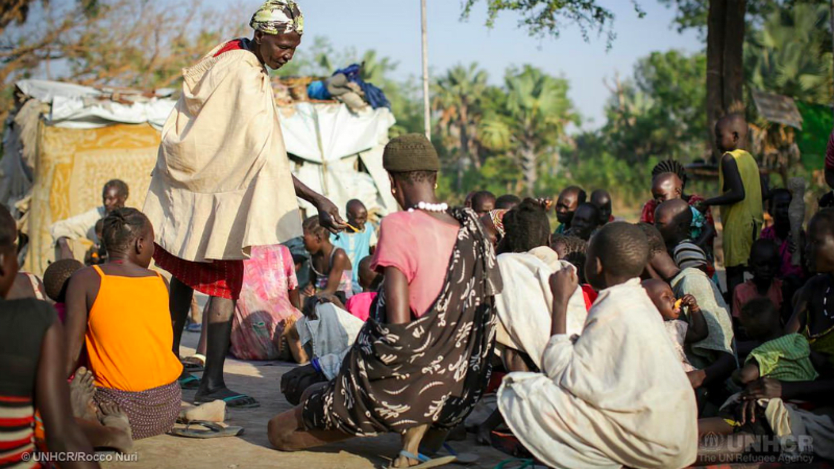
NAIROBI — In a world burdened by an unprecedented number of humanitarian crises, some are receiving less attention than others. Nowhere is that truer than Africa, where the world’s five most neglected displacement crises are located, according to a new report.
“We believe that humanitarian relief should be given according to needs alone,” Jan Egeland, secretary-general of the Norwegian Refugee Council, said during a press briefing in Nairobi. “That should be the principle that donors adhere to…. It is not.”
NRC created the list after it examined 24 large displacement crises globally. Countries were ranked based on the lack of three criteria: Will of armed groups and the international community to broker peace agreements and find political solutions; the level of media attention the crisis receives in comparison to its size; and the amount of funding received.
One of the issues that crises in Africa face, is that they are less visible to donor countries, said Egeland. People are largely displaced within the continent — rather than crossing the Mediterranean to seek refuge.
“Overall, humanitarian funding has increased — very slightly. But the cost of the world’s humanitarian responses is growing almost exponentially,” said Nigel Tricks, NRC’s regional director for East Africa and Yemen. “That’s creating a context where donors are having to choose where they are putting their money.”
1. The Democratic Republic of the Congo
While DRC has suffered conflicts for decades, the violence has reached a fever pitch in recent years — leading to the largest number of people displaced the country has ever seen. At the end of last year, there were 4.5 million people internally displaced and another 700,000 who had fled the country.
Some 8.9 million people don’t have access to food and clean water in DRC and 2.2 million children are acutely malnourished. Despite widespread human suffering, the humanitarian funding appeal was only about halfway funded last year. Aid organizations have also pulled out of several provinces. The situation is expected to worsen and spread throughout the Great Lakes region.
“It’s up there with Syria,” said Egeland. “People are really taken aback when I tell them that because it’s not in any degree reflected in global media, nor by politicians and diplomats in their work.”
2. South Sudan
The crisis in South Sudan has left over half of the population dependent on aid and pushed one-third of the population out of their homes. Some 2.4 million people have fled to neighboring countries to seek shelter. More civilians are without food than ever before in South Sudan and the humanitarian sector is raising alarm about the threat of famine.
Compounding these urgent needs is the difficulty in accessing populations. It’s a country that is increasingly difficult to operate in for humanitarians. The current conflict has claimed the lives of 100 aid workers, with nearly one-third of those deaths happening last year. Media attention to the crisis has also decreased, partially due to government restrictions on foreign journalists.
3. Central African Republic
Despite a ceasefire in 2014, a national reconciliation forum, and elections, the conflict in the Central African Republic has worn on, with an escalation in violence at the end of 2016. Some 1.2 million people are internally displaced or living as refugees in neighboring countries. This is one-fourth of the population. The appeal was only 41 percent funded last year, making it one of the least funded major crises in 2017.
The Central African Republic topped NRC’s list last year. It has moved down in rank — not because the situation has improved — but because of the drastic deterioration in South Sudan and DRC.
4. Burundi
More than 400,000 people have fled Burundi since 2015 after violence erupted in response to President Pierre Nkurunziza’s announcement extending his presidency. The number of refugees increased 20 percent last year. Some 3.5 million people are in need of assistance and one-fourth of the country does not have enough food. Despite these needs, there have been only a few major international initiatives working to protect civilians or place pressure on forging a pathway towards a political solution.
“Nobody has paid attention to the crisis in Burundi and nobody has given any money. It’s not there in the media, and it’s not there in any strategic, geopolitical consideration,” said Egeland.
5. Ethiopia
Last year, Ethiopia suffered the worst drought it has faced in over 30 years, as well as a spike in insecurity in the Oromia and Somali regions. This led to the displacement of more than 1 million people last year. Many communities were impacted by both the drought and conflict. Despite the double burden of crises, the international aid appeal was only 46 percent funded. The government and humanitarian sector are warning of acute food insecurity for up to 7 million people if funding doesn’t pull through.
Other neglected displacement crises highlighted by the report include the Palestinian Territories, Myanmar, Yemen, Venezuela, and Nigeria.








